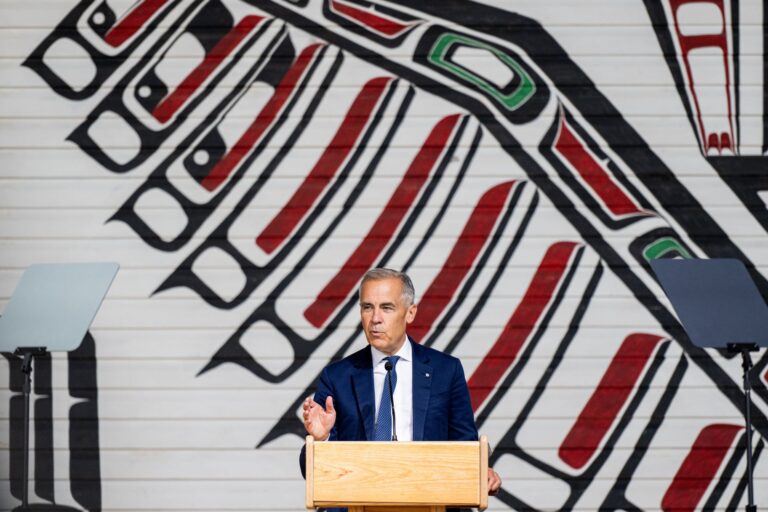(Version française disponible ici)
The federal government says it’s committed to reconciliation with Indigenous Peoples. We hear it in political speeches, read it in press releases and watch as leaders attend Indigenous Peoples Day and the National Day for Truth and Reconciliation. Yet, 40 years after Parliament promised to end sex discrimination in the Indian Act and after more than 18 ministers of Indian Affairs, First Nations women are still fighting for equality.
Parliament claims to be fixing the problem one step at a time, but incremental equality is not equality. Justice delayed is justice denied and that is not reconciliation.
Fourth bill in 40 years
The federal government is advancing Bill S-2, the fourth amendment in 40 years to fix the Indian Act’s Indian registration (status) provisions. Like the previous amendments – Bill C-31 (1985), Bill C-3 (2011), and Bill S-3 (2017) – it once again falls short of ending all the sex- and race-based discrimination that has torn First Nations families apart for generations.
Bill S-2 would reinstate people who lost their Indian status through enfranchisement. The bill is a response to this year’s Nicholas class-action ruling in B.C., which found that parts of the Indian Act infringe on the Charter rights of descendants who have been denied status. The judge ordered the act to be changed by next April.
But, without amendments, Bill S-2 leaves intact the second-generation cut-off rule, which prevents many children and grandchildren of First Nations women from being registered as Indians under the law and in many cases from being registered as members of their home First Nations.
Under the rule, after two generations of out-parenting (where only one parent is a registered Indian), the children will be cut off.
My own grandchildren are among those excluded. They are being raised Mi’kmaq, rooted in our culture, history, traditions, stories and ceremonies, and closely connected to my large extended family, our home community of Ugpi’ganjig (Eel River Bar First Nation) and the larger Mi’kmaw Nation. But in the eyes of the federal government, my grandchildren do not count.
After generations of discriminatory Indian Act rules, some in our communities have come to believe that unregistered children are somehow less Indian. This is the devastating legacy of Canada’s legislation and the government is still dragging its feet to end it.
The politics of delay
Bill S-2, An Act to amend the Indian Act (new registration entitlements), was introduced in the Senate earlier this year, on May 29. The Standing Senate Committee on Indigenous Peoples has heard from many witnesses, including First Nations leaders, First Nations women advocates and youth – all of whom are rights-holders. The vast majority agree that while it is essential to resolve the Nicholas class action, Parliament should not pass another discriminatory bill. It must repeal the second-generation cut-off rule now.
Despite this general consensus, Mandy Gull-Masty, the Minister of Indigenous Services Canada, urged senators to leave the discrimination in place and promised to address it later in a standalone bill. She argued that the issue is complex, that First Nations must be consulted and that the government needs to meet the April deadline.
In other words, she is asking First Nations women and children to wait – again.
Even worse, like all previous amendments, Bill S-2 contains a clause that blocks First Nations women and their descendants from suing the government for the ongoing discrimination. This is not only a denial of equality, but also the right to a legal remedy.
This pattern defines Canada’s approach to reconciliation: endless consultations, studies, and working groups that substitute process for justice. Bureaucrats spend years planning engagements and drafting discussion papers while families are excluded from their Nations and often fracture as a result.
Consultations on repeat
The minister’s claim that more consultations are required is especially galling. No consensus-based consultations were required when Parliament passed C-5, The One Canadian Economy Act, which negatively impacts the constitutionally protected Aboriginal, treaty and land rights of First Nations.
Furthermore, First Nations have already spent decades participating in nationwide consultative, engagement, and collaborative processes. From the 1990 Aboriginal inquiry into the Impacts of the 1985 Amendments to the Indian Act (Bill C-31) to the Senate’s 2022 report, Make It Stop!, the message has been consistent: end sex discrimination and repeal the second-generation cut-off. The Senate gave the federal government a deadline of June 2023 to repeal the cut-off. That deadline came and went.
Instead, in November 2023, the government announced another consultative process, which didn’t begin until June 2024, a year after the Senate deadline for repeal. First Nations have until next month to submit their comments.
When Canada wants to pass bills that restrict our rights, consultation is never an obstacle. When it comes to equality for First Nations women, suddenly there is more talking to do.
What more is required? The Senate committee heard from numerous witnesses, including organizations that collectively represent all First Nations in Canada, including the British Columbia Assembly of First Nations, which alone represents one-third of all First Nations in Canada. The vast majority of these First Nations and First Nations women rights-holders support the end of sex discrimination and the repeal of the second-generation cut-off.
Gull-Masty claims there cannot be a one-size-fits-all solution. But equality rights are one-size-fits-all. We all have the right to equality and to be free from discrimination. There is no way Canada can consult its way out of that right.
The law on equality is clear
The Supreme Court has rejected every excuse the federal government has relied on to justify a breach of equality rights under Section 15 of the Canadian Charter of Rights and Freedoms.
Charter breaches are not justified by the complexity of the law, administrative burden or costs.
The court has made it clear. “Groups that have historically been the target of discrimination cannot be expected to wait patiently for the protection of their human dignity and equal rights while governments move toward reform one step at a time,” it said in Vriend v. Alberta.
Yet here we are, 40 years later, being told once again to wait patiently. The reality is that no amendment to the Indian Act’s registration provisions has ever been made as a result of consultation. Every single one followed litigation that forced the government’s hand. We know the federal government won’t voluntarily make the amendment, regardless of consultations. That’s why the Senate must hold its ground and defend our equality rights.
This past Tuesday, the Senate committee did just that. In a 10-1 vote, the committee amended Bill S-2 to eliminate the second-generation cut-off, showing once again that the Senate stands behind equality for First Nations women.
The human cost
Behind all the federal manoeuvres and legal arguments are real people, First Nations women, children, and families being torn apart because of the ongoing discrimination. Exclusion severs connections, restricts access to critical social programs, denies our political voices, and the right to make governing decisions about what happens in our First Nations.
This is a continuation of Canada’s policy of forced assimilation designed to “get rid of the Indian problem” through a process of legislative extinction. The Indian Act rules attack our collective sense of identity, relationship, kinship and belonging and causes irreparable harm.
By maintaining the second-generation cut-off, Canada continues a policy that the National Inquiry into Missing and Murdered Indigenous Women and Girlsdescribed as part of a broader pattern of genocide against Indigenous women and families. By telling us to wait, it highlights one of the findings of the report: the lack of respect Canada has for the human rights of Indigenous women.
Reconciliation or rhetoric?
Reconciliation should be more than a slogan. It cannot be about holidays while colonial laws remain in force. It should be a moral and legal promise followed by immediate action to end the laws that have hurt First Nations for generations. It must be measured by whether Parliament will act now to end injustice.
If Canada truly believes in reconciliation, it will do all the things. It will:
– Repeal the second-generation cut-off and restore the one-parent rule for registration;
– Repeal the arbitrary 1985 cut-off that divides families; and
– Remove all legislative bars to compensation so that those harmed can seek redress.
Anything less continues the very system of sex-based discrimination that reconciliation claims to oppose. Canada cannot claim to be a human rights leader while discriminating against First Nations women. Nor can it claim reconciliation while denying our children their birthright. The passing of amendments this week by the Senate committee is an important step. But the battle isn’t over. They still need to pass in the full Senate and the House of Commons.
Reconciliation cannot wait another generation. My grandchildren deserve justice now.












